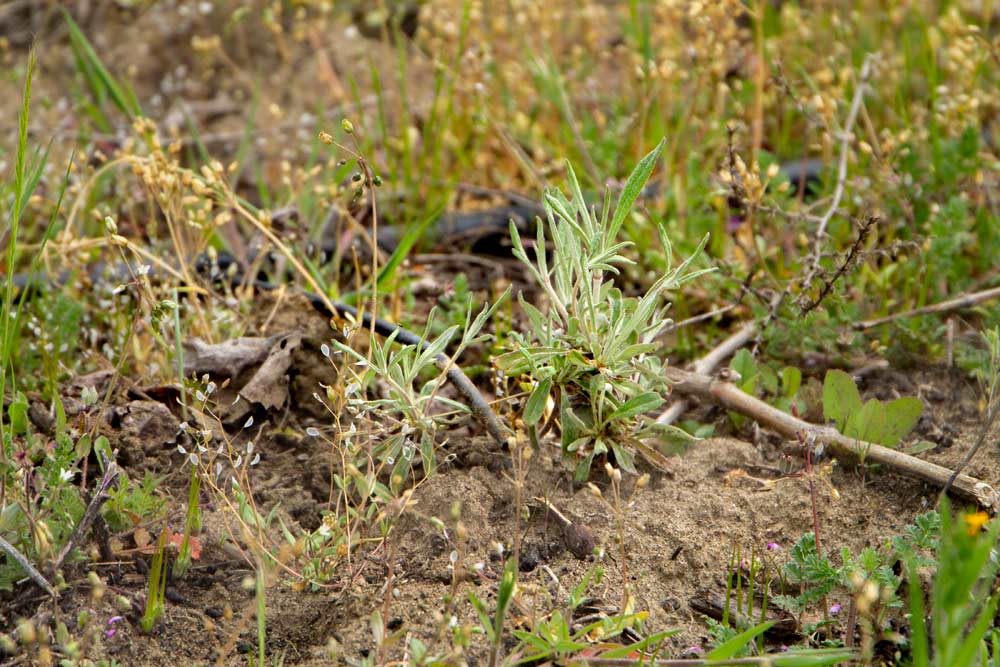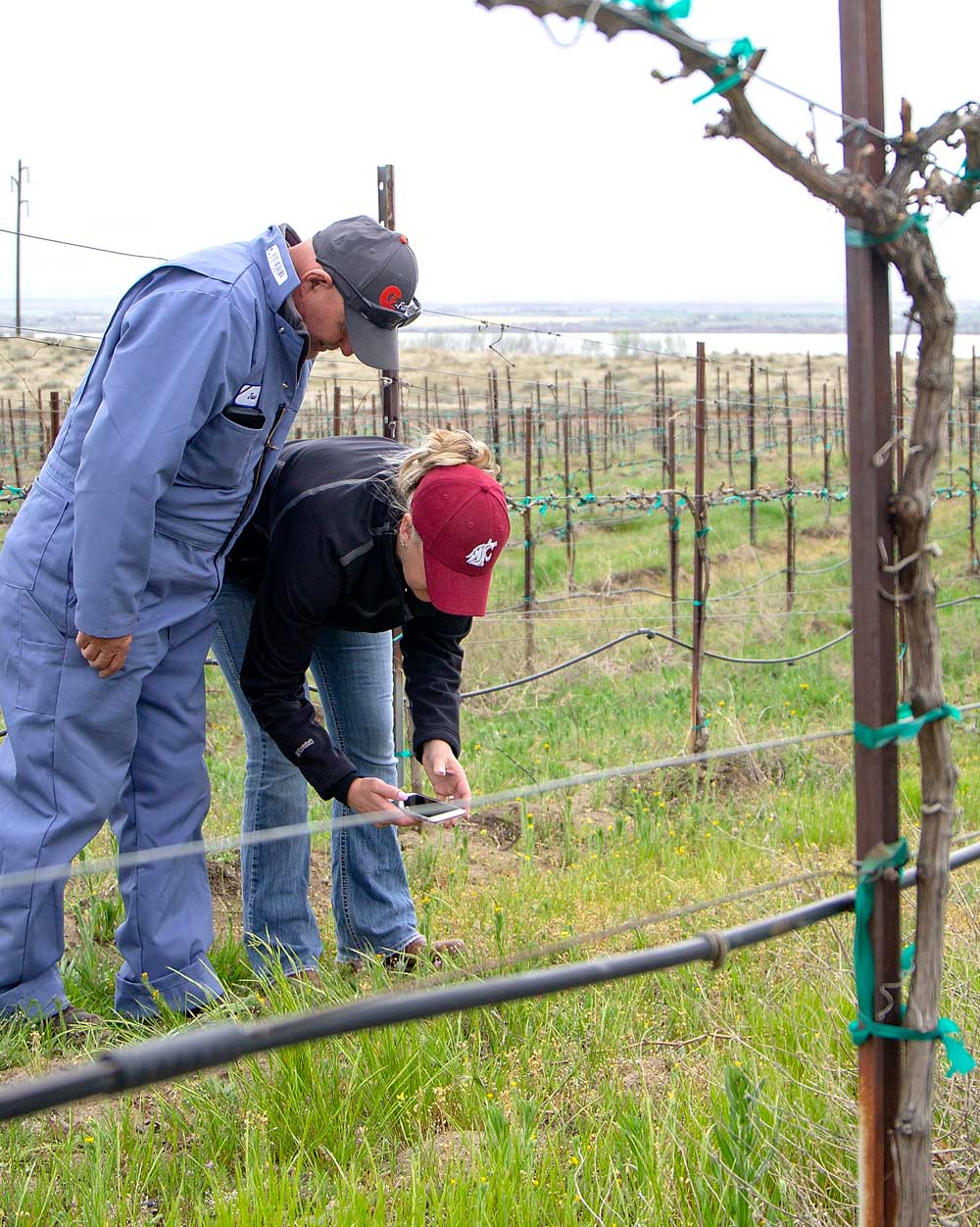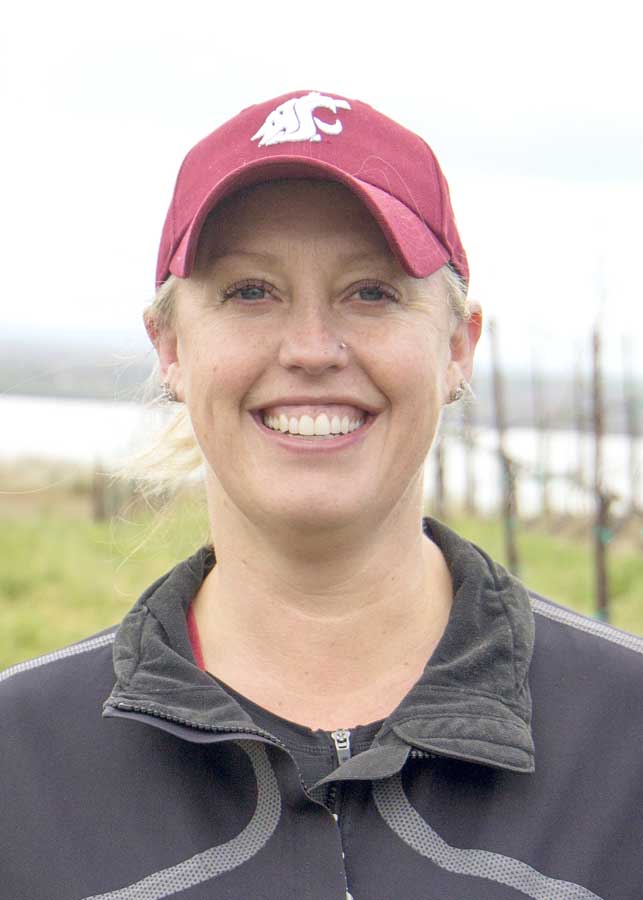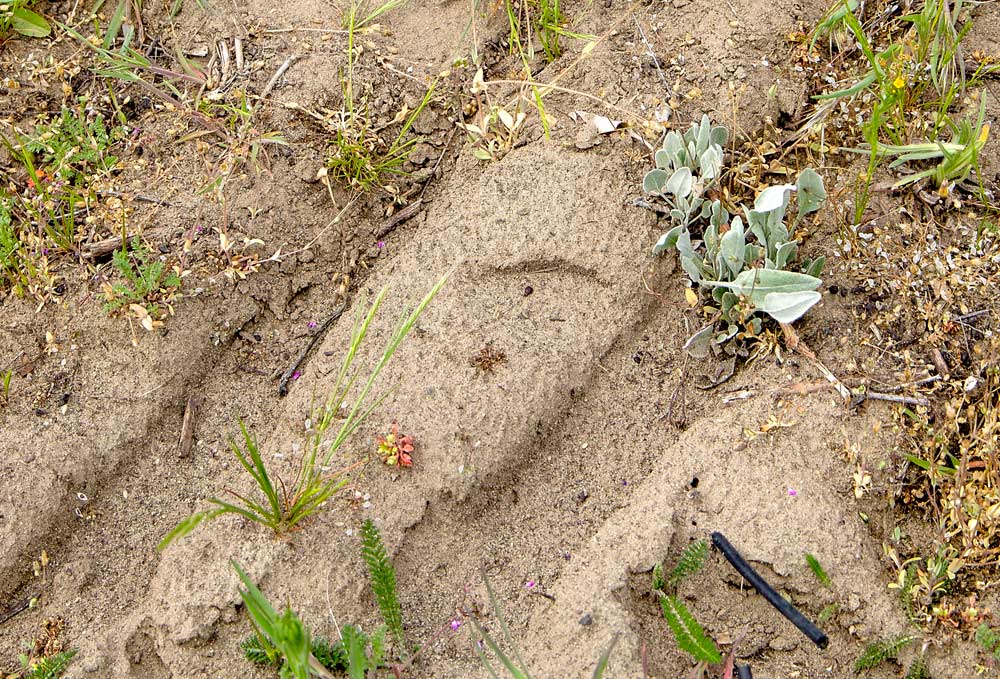
Drip irrigation proved key to establishment of native plants, such as this parsnip buckwheat, in the midst of a Chardonnay block at Ste. Michelle Wine Estates’ Canoe Ridge Vineyard. Once established, the hearty native perennials are expected to spread and lure beneficial insects.
(Kate Prengaman/Good Fruit Grower)
Grapevines find themselves quite at home in the Pacific Northwest’s Columbia Basin, but for the region’s native species, the neighboring vineyards might as well be a world away.
Native insect predators and parasitoids could offer valuable pest control, but first they need a reason to spend more time in the vineyard. Native plants, with insect luring blooms, could provide just that beacon for better biocontrol.
“We’re just conserving the natural enemies that are common in the environment once you leave the agricultural areas. They are all around us; it’s just getting them to the vineyards that’s the challenge,” said Washington State University entomologist David James. He has promoted the idea of incorporating native plants into vineyards for years because they can attract beneficial insect species.
“After seven years of research, we’ve found that the more native plants you can have, the better and more balanced biological control you are going to get,” he told attendees at a Washington State Grape Society field day last summer.
But will bringing native plants back to grow amid the grapevines that displaced them prove worth the effort? At Ste. Michelle Wine Estates’ Canoe Ridge Vineyard, managers are testing that premise with over 1,000 tiny plugs tucked among the weeds in the row middles of a Chardonnay block.

Canoe Ridge irrigation manager Jose Coria and vineyard manager Kari Smasne look for native perennials they planted in the vineyard last summer. Most of the plants survived the winter. (Kate Prengaman/Good Fruit Grower)
“The point is that they will overgrow and overcome the weeds that are there. It’s like planting a cover crop,” said vineyard manager Kari Smasne. But unlike a typical seeded cover crop, the desired species are only available as tiny plugs, for now.
“It’s not cheap to plant these plants in your vineyard,” she said. “We planted in June and it was hot. Planting something at that time of year, even though these are drought-tolerant native plants, is a shock.”
Last year, Jose Coria, irrigation supervisor for Canoe Ridge, set up a special drip line down the middle of each row with spaghetti tube for each of the plugs that were planted. Since the site is on sandy soil, getting the water directly to each plant, and not their weedy competition, was key, he said.
About 90 percent survived their first year, and this season Coria will pull the irrigation and allow the native plants to prove their drought tolerance. Ability to withstand water stress, mowing and occasional crushing by tractors and harvesters will determine which plants succeed in the vineyard.

Kari Smasne
“We didn’t change the management at all,” to accommodate them, Smasne said, beyond not mowing after June last year when the transplants were first setting root.
James recommended the species selected for the Canoe Ridge Vineyard planting: yarrow, blanketflower, snow buckwheat and parsnip buckwheat, based on his own trials with native plants in the WSU Prosser vineyard.
“Yarrow and buckwheats are the best performers as vineyard ground cover to date,” he said in a talk about promoting biodiversity in vineyards last fall. That’s considering both their ability to survive and thrive in a working vineyard and their attractiveness to important beneficial insects such as lacewings, ladybeetles, predatory bugs and parasitoid wasps.
At Canoe Ridge, yarrow seems to have spread the most, Smasne said, but the buckwheats, though small, survived well, too. “We’re hoping to have the row middles full of flowers,” she said.
This year, the test will be to see which plants survive without irrigation.
And in coming years, they plan to invite James and his students to survey for insects in the vineyard to see if the native plants lure the desired beneficials, said Bill Riley, senior viticulturist and research leader for Ste. Michelle Wine Estates.

Toughness is key for survival in a working vineyard, as shown by this snow buckwheat growing fine despite having been run over by a tractor. (Kate Prengaman/Good Fruit Grower)
If the plants prove themselves, James hopes that in the future, a ground cover seed mix of native species can be developed to minimize the cost and care required to establish the plants.
Other plant candidates of interest for the Columbia Basin include showy milkweed, Oregon sunshine, western clematis and slender hawksbeard, James said. James also recommends leaving as much native sagebrush and rabbitbrush as possible when establishing new vineyards.
“Native plant restoration is a growing business, and we know a lot more than we used to about how to work with plants like yarrow and buckwheat,” he said in his talk on the subject last year. “Biodiversity will be the main tenant in the future as pesticide inputs decline. It’s the thing of the future; I believe that, but there is a lot to learn. •
—by Kate Prengaman






Leave A Comment